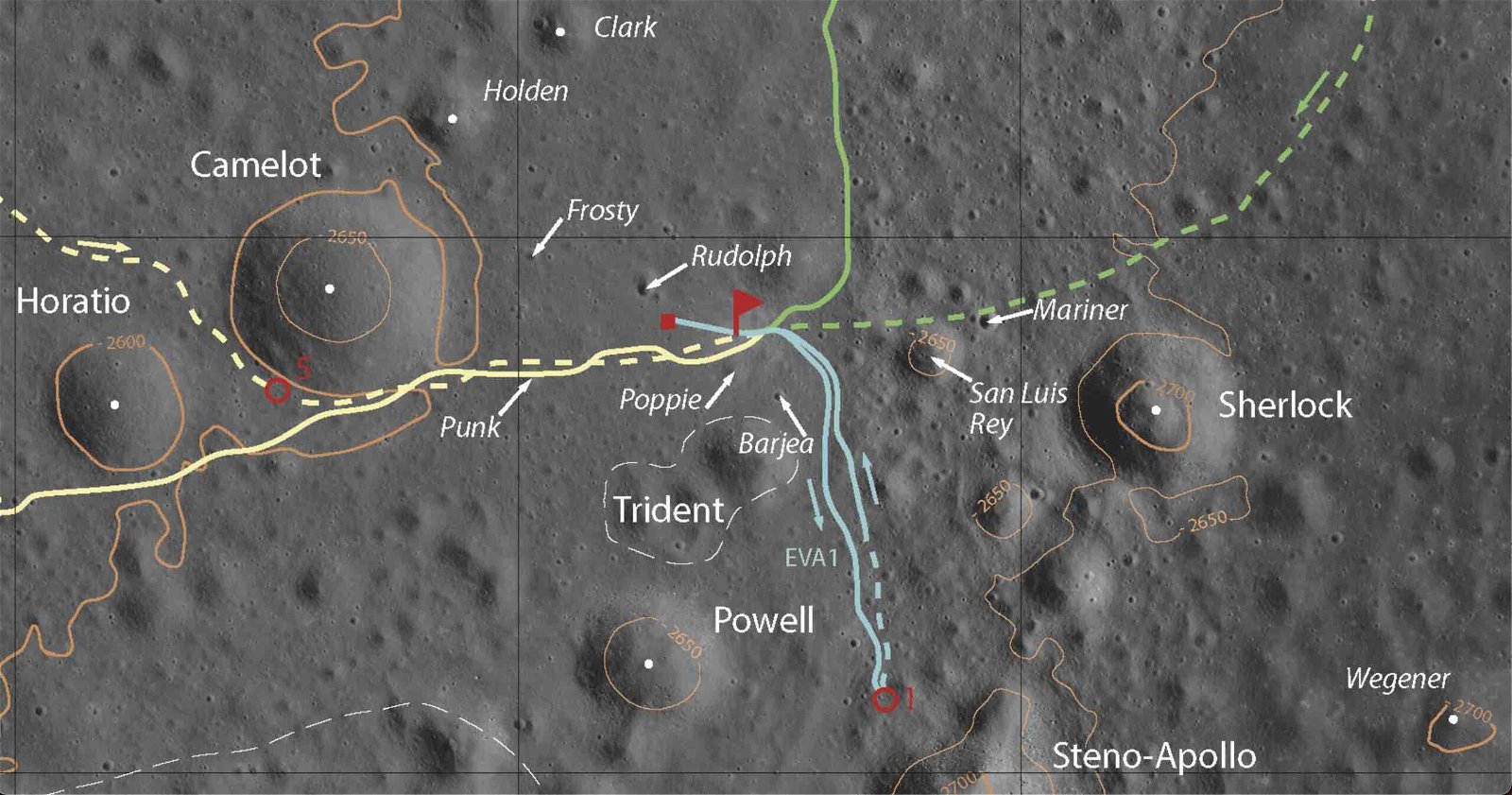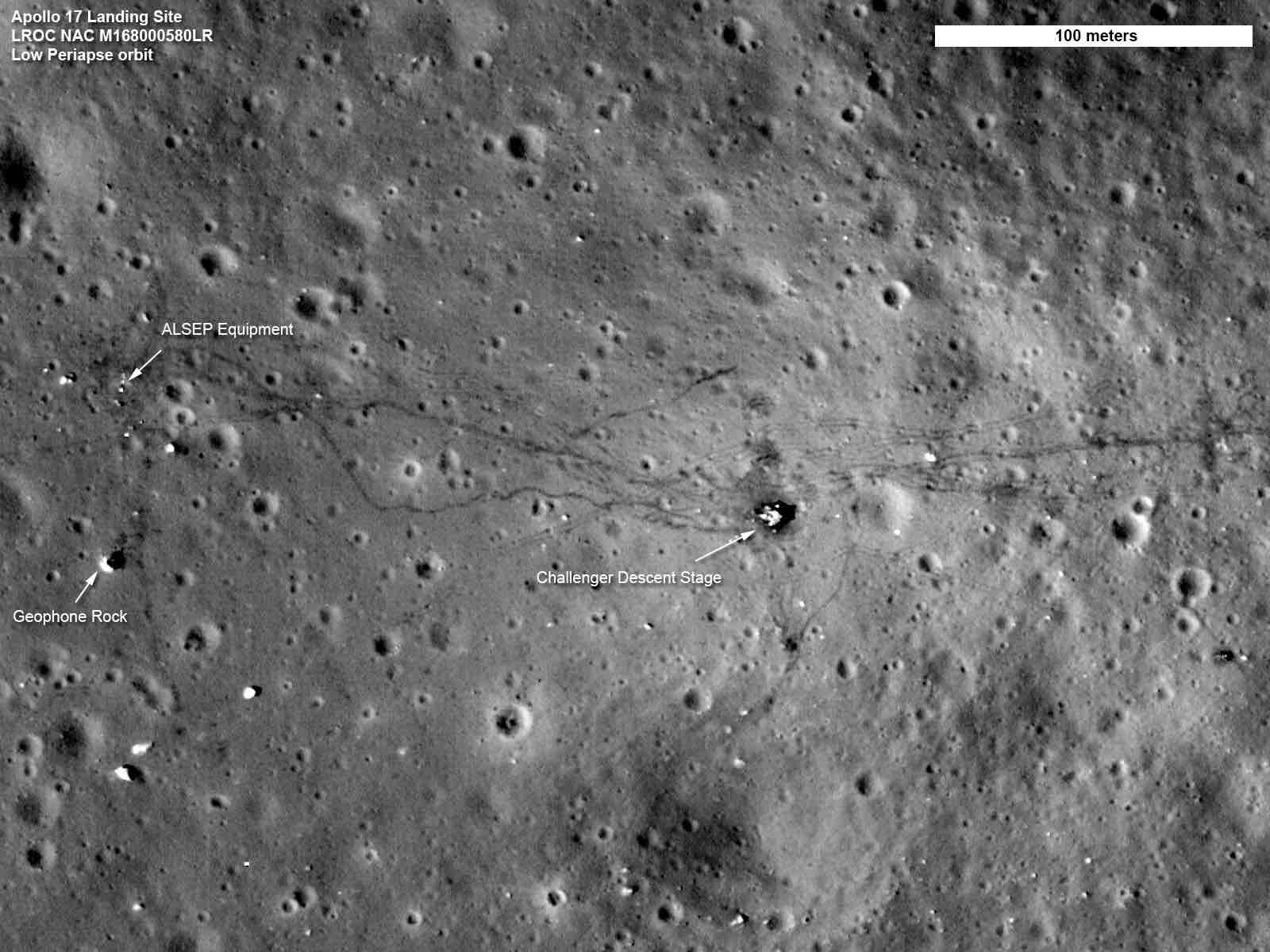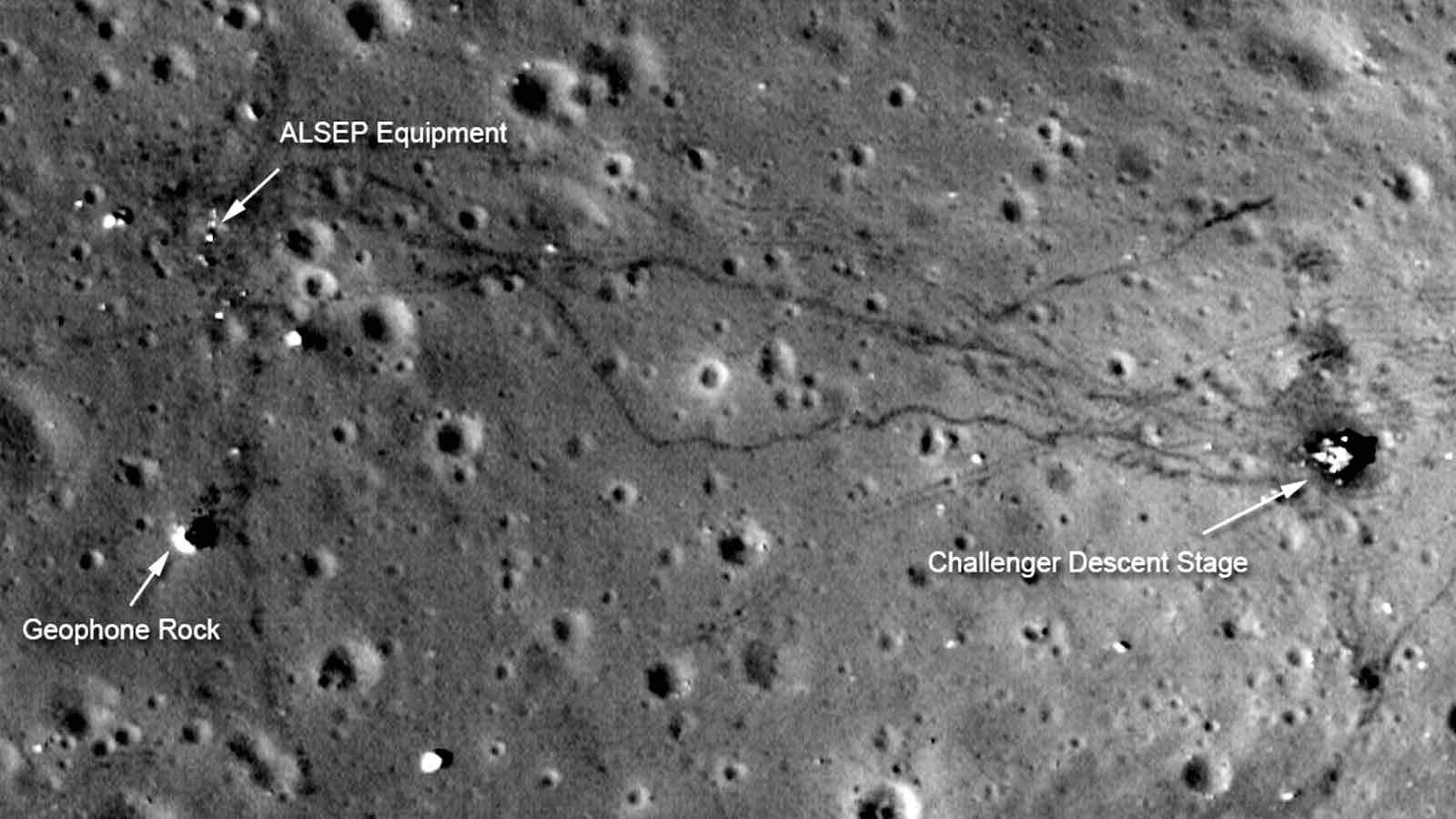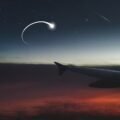Scientists studying the sources of an unusual form of seismic phenomena detected on the Moon have traced it back to a surprising location: the lunar lander base from one of NASA’s historic Apollo missions.
Each day, the moon produces repeating patterns of seismic signals, the precise cause of which has remained a mystery. Known as thermal moonquakes, one thing that is known about these signals is that they appear to be related to the day and night cycles that occur on the Moon.
Since the Moon has very little atmosphere to provide insulation, extreme variations in temperature occur on its surface, with peaks of as much as 250 degrees Fahrenheit during the hottest part of the lunar day, then dropping to frigid cold temperatures below -208 degrees at night. Expansion and contraction due to these drastic daily temperature shifts are the driving forces behind thermal moonquakes.
In December 1972, Apollo 17, the final Moon mission of NASA’s historic Apollo program, successfully carried out a series of ambitious science experiments on the lunar surface. The mission was notable for its inclusion of Harrison Schmitt, the mission’s Lunar Module Pilot who also became the only professional geologist to ever visit the Moon.


While there, Schmitt and fellow astronaut Eugene Cernan helped deploy a series of four geophones—devices that detect ground vibrations caused by seismic activity—to help characterize the near-surface structural features of the landing site. This was achieved using a series of explosive shots during the Apollo 17 mission, although the geophone array was reactivated periodically between October 1976 and May 1977, allowing it to passively record signals produced during thermal moonquakes.
Little was done with the seismic data that Apollo 17’s geophones collected decades ago. Now, for the first time, the 1970s data has been revisited and analyzed with assistance from machine learning algorithms, which are helping to reveal surprising new information about seismic phenomena occurring on the Moon.
Apollo 17 and the Moonquake Mystery
In the recent study, undertaken by Francesco Civilini, Renee Weber, and Alan Husker, the researchers assessed signals from thermal moonquakes collected by the Apollo 17 Lunar Seismic Profiling Experiment (LSPE), looking for what factors could help define three key components related to these events: their emergence, peak ground-velocity, and incident azimuth.
Based on the data they obtained, the researchers were able to calculate the arrival times of thermal moonquakes with a greater degree of accuracy, along with measuring their envelope length and other factors, revealing a likely correlation between thermal moonquakes and the distribution of lunar regolith.
“We hypothesize that the correlation between temperature and emergence could be due to changes in regolith scattering,” the team reports, in addition to factors that include “higher energy daytime events occurring further away” as possible sources behind naturally occurring thermal moonquakes.
However, with help from machine learning models they employed, a second variety of seismic signature was detected that appeared to result from what the team characterizes as “impulsive, high-amplitude events” resulting from “rapid temperature transitions during sunrise and sunset.”
The team was ultimately able to trace this second variety of seismic signals back to a surprising source: the Apollo 17 lunar lander base.
Moonquakes at Sunrise
Each morning as sunlight strikes the Apollo 17 lander, its temperature begins to rise. As the lander heats up, it expands, causing it to produce a consistent series of “pops” that were prominent enough to be detected from the seismic array located several hundred meters away during the recordings it made during the 1970s.
“They were incredibly regular and repeating,” coauthor Alan Husker said in a statement, noting that spanning a period of between five and seven Earth hours each lunar morning, there would be another seismic “pop” detected every five to six minutes.


Thermal moonquakes are still too subtle to be felt by astronauts conducting scientific work on the lunar surface during Moon missions, although NASA believes the new information revealed from the 1970s LSPE data could provide important insights that could be beneficial for the construction of landers and other equipment that will be employed during future missions.
The team’s findings also point to new ways that seismic data could be used to reveal features about the Moon that could be promising locations for future research efforts.
Husker says there are “certain regions in craters at the Moon’s South Pole that never see sunlight” where seismometers could be placed in the future.
“If we could put up a few seismometers there, we could look for water ice that may be trapped in the subsurface,” Husker said in a statement, noting that water could be easily detected because it impedes the speed at which seismic waves travel.
“The Moon is the only planetary body other than the Earth to have had more than one seismometer on it at a time,” Husker added, emphasizing that from a seismological perspective, the study of thermal moonquakes presents scientists with a unique opportunity.
“It gives us the only opportunity to thoroughly study another body,” Husker said.
The team’s paper, “Thermal moonquake characterization and cataloging using frequency-based algorithms and stochastic gradient descent” was published in the September 2023 edition of JGR Planets.
Micah Hanks is the Editor-in-Chief and Co-Founder of The Debrief. He can be reached by email at micah@thedebrief.org. Follow his work at micahhanks.com and on Twitter: @MicahHanks.

